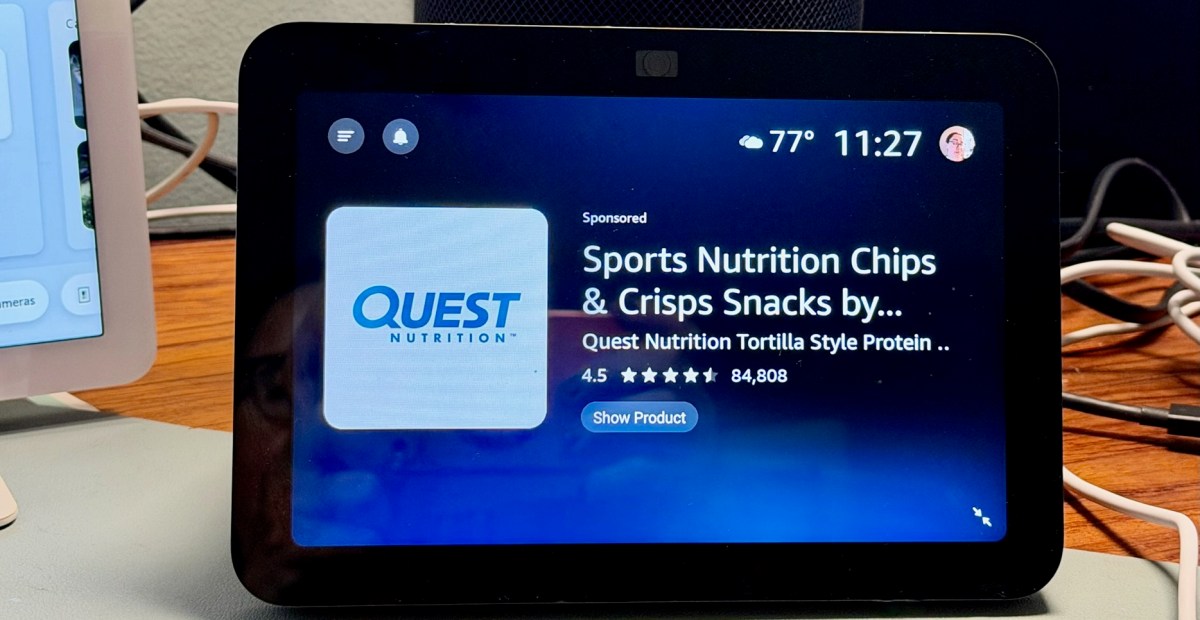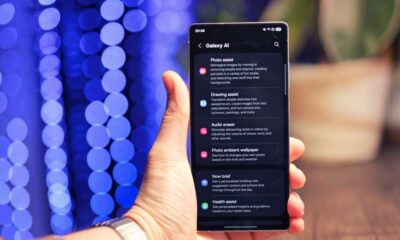Amazon
The Downfall of the Echo Show: How Amazon’s Giant Ads Have Ruined the User Experience

Amazon recently rolled out a significant update to its line of Alexa-enabled Echo smart speakers and displays, led by former Microsoft design chief Ralf Groene, who was convinced by Amazon Devices & Services head Panos Panay to come out of retirement. The update included two new Echo Show smart displays, marking the first step in Amazon’s goal to create products that customers will love.
However, there is a major obstacle to customers truly loving their Echo Shows: ads. In recent months, full-screen display ads labeled as “sponsored” have started appearing on current Echo Shows, much to the dissatisfaction of users. These ads are intrusive, appearing between photos in Photo Frame mode or between content in different categories like music, recipes, and news.
Users have reported seeing ads for products such as herbal supplements, sports chips, and picture frames, which they find irrelevant and annoying. Unlike previous ad experiences on the Echo Show, these new ads cannot be disabled, leading to frustration among users.
When asked about the role of ads in creating products customers love, Panay mentioned that relevant ads could be seen as an “add-on” rather than an ad. He explained that if an ad helps customers find what they need faster, it can be a positive experience. However, he acknowledged that the randomness of the current ad experiences is not ideal and emphasized the importance of providing customers with valuable information.
While Amazon maintains that advertising is a small part of the Echo Show experience and helps customers discover new content, many users continue to find the ads disruptive and unwanted. Some have tried various workarounds to disable the ads, but the lack of a straightforward solution has raised questions about the usability of the device.
The smart home industry holds promise, but the current landscape is filled with compromises. Amazon’s strong voice assistant is overshadowed by its aggressive advertising approach, while Google’s smart home division faces uncertainty. Apple’s HomeKit offers a premium experience but comes at a higher cost and with limitations. Alternative solutions like Home Assistant and SmartThings require more effort to set up and have limited voice control options.
As Amazon introduces more ads to its Echo Show devices through Alexa Plus, users are looking for real value without constant commercial interruptions. It’s time for Amazon to focus on enhancing the smart home experience and prioritize customer satisfaction over advertising revenue.

-

 Video Games2 days ago
Video Games2 days agoTekken 8: Rise of the Shadows
-

 Video Games1 day ago
Video Games1 day agoGoku Takes on the Dragon Ball FighterZ Arena
-

 Amazon2 days ago
Amazon2 days agoNeil Young Takes a Stand: Pulling Music from Amazon in Protest of Jeff Bezos’ Support for Trump
-

 Tech News2 days ago
Tech News2 days agoSamsung Galaxy UI 8: Embracing the Big Free AI Upgrade
-

 Security2 days ago
Security2 days agoCritical Vulnerability Exposed: Oracle EBS Targeted in Recent Cyber Attacks by Cl0p Hackers
-

 Apple2 days ago
Apple2 days agoExploring the Dystopian Realms of Pluribus: An Apple Original Series Trailer
-

 Microsoft2 days ago
Microsoft2 days agoEnhanced Copilot Features: Creating Office Documents and Gmail Integration
-

 AI23 hours ago
AI23 hours agoOracle’s Next-Gen Enterprise AI Services Powered by NVIDIA’s Cutting-Edge GPUs


























